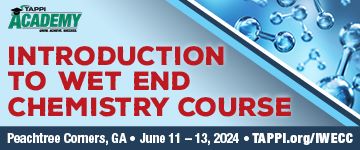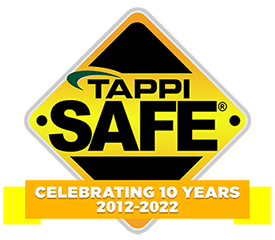 Search
Search
Use the search bar or filters below to find any TAPPI product or publication.
Filters
Content Type
Publications
Level of Knowledge
Committees
Collections
Journal articles

Magazine articles

Effectiveness of masks in the suppression of COVID-19 cases during the ongoing pandemic in India, TAPPI Journal October 2022
ABSTRACT: Perhaps the worst predicament faced by humanity in the twenty-first century is the COVID-19 pandemic, which is caused by the SARS-CoV-2 virus. Most parts of the world, including India, went into lockdowns for some period because of the massive increase in cases throughout 2020. Face masks became an important counter-measure for protecting the populace, health professionals, and medics, particularly during the period prior to the mass availability of vaccines. This study intends to evaluate the effectiveness of face masks in limiting the spread of the virus. The data for the number of COVID-19 cases was analyzed from January 1, 2022 to May 31, 2022, using Python programming. This timeframe involved face mask mandates and no mask requirement, and hence was considered to be ideal for analyzing the usefulness of face masks. A decline in cases during the mandate was observed, while the opposite occurred without the mandate. The outcome of the research showed that face masks are effective additional measures against the spread of SARS-CoV-2. This study elevates the value of personal protective equipment (PPE), such as face masks, made with nonwovens and other fabrics, as lifesavers in the case of airborne diseases such as COVID-19 and other pulmonary disorders.
Journal articles

Magazine articles

Evaluation of rice straw for purification of lovastatin, TAPPI Journal November 2021
ABSTRACT: Cholesterol synthesis in the human body can be catalyzed by the coenzyme HMG-CoA reductase, and lovastatin, a key enzyme inhibitor, can reduce hypercholesterolemia. Lovastatin can be obtained as a secondary metabolite of Aspergillus terreus ATCC 20542. In this study, rice straw of lignocellulose was used in aeration and agitation bath fermentation in a 1-L flask, and a maximal crude extraction rate of 473 mg/L lovastatin was obtained. The crude extract was treated with silica gel (230•400 mesh) column chromatography. Ethyl acetate/ethanol (95%) was used as the mobile phase, and isolation was performed through elution with various ethyl acetate/ethanol ratios. The highest production rate of 153 mg/L was achieved with ethyl acetate/ethanol in a ratio of 8:2. The lovastatin gained from the crude extract was added to 12 fractions treated with 0.001 N alkali, and acetone was then added. After 24 h of recrystallization at 4°C, the extract underwent high-performance liquid chromatography. The purity had increased from 25% to 84.6%, and the recovery rate was 65.2%.
Journal articles

Magazine articles

Editorial: Industry coating expert Gregg Reed joins TAPPI Journal editorial board, TAPPI Journal November 2021
ABSTRACT: TAPPI and the TAPPI JOURNAL (TJ) editorial staff would like to welcome a new member to the TJ editorial board, Gregg Reed, Ph.D., technical support leader at Imerys in Gray, GA. In his current position, Gregg develops new mineral and specialty coating products for paper and packaging applications and manages customer requests, including pilot trials. He also supervises the activities of technicians and chemists in the laboratory.
Journal articles

Magazine articles

The Shendye-Fleming OBA Index for paper and paperboard, TAPPI Journal March 2022
ABSTRACT: We are proposing a new one-dimensional scale to calculate the effects of optical brightening agents (OBA) on the bluish appearance of paper. This index is separate from brightness and whiteness indices.In the paper industry, one-dimensional scales are widely used for determining optical properties of paper and paperboard. Whiteness, tint, brightness, yellowness, and opacity are the most common optical properties of paper and paperboard. Most of the papers have a blue cast generated by addition of OBA or blue dyes. This blue cast is given because of the human perception that bluer is whiter, up to a certain limit. To quantify this effect, it is necessary to determine how much blue cast paper and paperboard have. As the printing industry follows the ISO 3664 Standard for viewing, which has a D50 light source, this also plays a very important role in showing a blue cast. Color perception is based on light source and light reflected from an object. The ultraviolet (UV) component in D50 interacts with OBA to provide a reflection in the blue region of the visible spectrum. Use of a UV blocking filter results in measurements without the effect of emission in the blue region. This difference is used in determining the OBA effect in the visible range of the paper. This equation is known as the Shendye-Fleming OBA Index.
Journal articles

Magazine articles

Editorial: Unlock the gates! TAPPI Journal moves to fully Open Access research for all, TAPPI Journal March 2022
TAPPI and the TAPPI Journal (TJ) Editorial board and staff are pleased to announce that TJ’s content is now immediately open access (OA), with no embargoes. In 2020, the journal had adopted a hybrid OA model wherein its peer-reviewed research was free to TAPPI members for one year and then became free to all on the one-year anniversary of a research paper’s publishing date. Now, research is immediately accessible to all, increasing visibility and engagement for authors and providing an unobstructed view for researchers, students, and other interested parties.
Journal articles

Magazine articles

Editorial: Looking forward, looking back, TAPPI Journal January 2022
ABSTRACT: Much like 2020, 2021 was another year of remarkable highs and lows delivered by the COVID-19 pandemic. Vaccines, variants, and infection surges altered the way we behaved personally and professionally last year. As we move into 2022, we are now grappling with health and business concerns from the omicron variant that has overwhelmed hospitals in some areas and contributed to a global supply chain crisis. The ability to adjust has once again become a key skill in adapting to our shifting “new normal.”
Journal articles

Magazine articles

The role of hornification in the deterioration mechanism of physical properties of unrefined eucalyptus fibers during paper recycling, TAPPI Journal February 2024
ABSTRACT: Physical properties of cellulosic paper deteriorate significantly during paper recycling, which hinders the sustainable development of the paper industry. This work investigates the property deterioration mechanism and the role of hornification in the recycling process of unrefined eucalyptus fibers. The results showed that during the recycling process, the hornification gradually deepened, the fiber width gradually decreased, and the physical properties of the paper also gradually decreased. After five cycles of reuse, the relative bonding area decreased by 17.6%, while the relative bonding force decreased by 1.8%. Further results indicated that the physical property deterioration of the paper was closely related to the decrease of fiber bonding area. The fiber bonding area decreased linearly with the reduction of re-swollen fiber width during paper recycling. Re-swollen fiber width was closely related to the hornification. Hornification mainly reduces the bonding area of unrefined eucalyptus fiber rather than the bonding force. The work elucidates the role of hornification in the recycling process of unrefined eucalyptus fibers and the deterioration mechanism of paper physical properties, which will be helpful to control the property deterioration of paper and achieve a longer life cycle.
Journal articles

Magazine articles

Editorial: Surface energy in printing is the focus of runner-up, TAPPI Journal May 2024
ABSTRACT: The runner-up to the 2023 TAPPI Journal Best Re-search Paper was “Surface energy considerations for offset printing of coated paper and pa-perboard,” co-authored by Janet Pres-ton, Andrew Findlay, Jonathan Keen, and Eli Gaskin of Imerys Minerals in Par, England, UK. Their research appeared in the November 2023 special coating issue organized by TAPPI Journal Editorial Board Members Steve Ottone, Gregg Reed, and Greg Welsch.
Journal articles

Magazine articles

Furnishing autohydrolyzed poplar weakly alkaline P-RC APMP to make lightweight coated base paper, TAPPI Journal February 2022
ABSTRACT: This work investigated the effects of autohydrolysis pretreatment severity on poplar (Populus tomentosa Carr.) woodchips used to make a type of high-yield pulp (HYP) known as preconditioning followed by refiner chemical treatment, alkaline peroxide mechanical pulp (P-RC APMP). It also investigated the ratios for partially replacing sodium hydroxide (NaOH) with magnesium oxide (MgO) in the high-consistency (HC) retention stage of the P-RC APMP process on the obtained HYP’s properties. The results show that the pretreatment severity of autohydrolysis at combined hydrolysis factor (CHF) = 10.77 and the 50 wt% ratio for partially substituting NaOH with MgO were the optimum conditions for making light-weight coated (LWC) base paper. Compared to the conventional P-RC APMP, the optimized P-RC APMP had similar bulk and higher tensile, burst, and tear indices, as well as opacity, but a slightly lower ISO brightness. When the optimized P-RC APMP and commercial softwood bleached sulfate pulp (SBKP) were blended to make LWC base paper, the most favorable pulp furnish was comprised of 50% optimized P-RC APMP and 50% commercial SBKP. The obtained LWC base paper handsheet had better bulk, and its other properties could also meet the require-ments of LWC base paper.
Journal articles

Magazine articles

A new and quick testing method for evaluating commercial OCC recycled pulp, TAPPI Journal July 2024
ABSTRACT: In this paper, a new and quick testing method for evaluating commercial old corrugated cardboard/containers (OCC) pulp was developed and used by a large Chinese boxboard manufacturer for quality control of imported OCC pulp.






